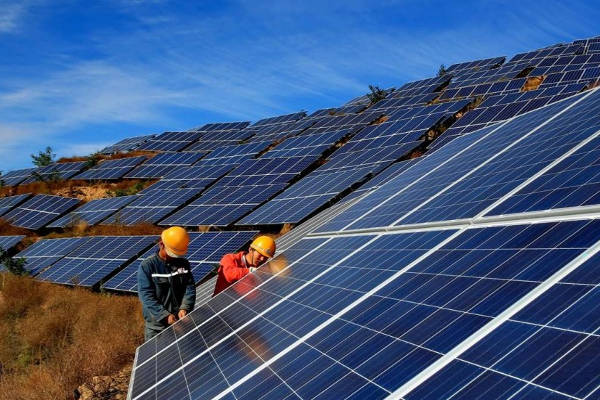After another record-breaking year for solar energy, the International Energy Agency (IEA) is forecasting strong growth in renewable energy capacity through 2022.
In fact, renewable energy presented two-thirds of global energy production in 2016, outpacing coal and gas capacity gains. IEA projections include an expansion in renewable energy generation capacity by 920 GW, representing growth of 43 percent.
Solar energy is expected to represent the lion’s share of the capacity gains. Recent solar PV growth in India and China prompted the IEA to boost its forecasts by one-third over last year’s report.
Solar PV capacity growth is expected to expand by 740 GW by 2020, which is more than the combined PV capacity of Japan and India today.
China Leads Renewable Energy Growth
Driven by a strong concern for air pollution and generation capacity, China is responsible for over 40 percent of global renewable energy growth. Its energy policy has shifted the market for renewable energy, assisting in falling PV costs and boosting further growth.
China has already surpassed 2020 solar PV targets and may exceed its wind energy target in 2019. In addition, China is the global leader in hydropower, electric vehicles, and bioenergy for electricity.
Likewise, China is leading the globe in solar energy manufacturing capacity. China represents 50 percent of the world’s solar PV and manufactures 60 percent of the world’s solar cells. This gives China considerable power in shaping the global PV market. China’s renewable energy policies also have widespread implications, as the country addresses grid integration issues.
China’s energy generation capacity is currently fueled primarily by coal, and the nation is the leading global emitter of carbon dioxide. Renewable energy sources represent a significant opportunity to mitigate air pollution and greenhouse gas emissions with significant implications on climate change and public health in China.
Whereas China represented 30 percent of global carbon dioxide emissions, India is responsible for a mere 7 percent.
India to Represent Strong Growth
Trailing just behind the United States in forecasted renewable energy capacity gains, India is expected to more than double its renewable energy capacity by 2022. Wind energy and solar PV are expected to represent 90 percent of this capacity growth as India looks to address grid-integration issues.
The future of renewable energy capacity growth in India, however, is somewhat uncertain as numerous hurdles exist. Resolving grid integration challenges and infrastructure issues could increase renewable energy capacity by an additional one-third in India through policy changes.
If this occurs, the renewable energy generation capacity growth rate of India could rival that of the United States.
With policy uncertainty in the European Union and the United States, growth trends are more difficult to predict. Despite this, the will the United States remain the second largest growth market as growth will likely slow in the European Union among weak electricity demand.











Comments